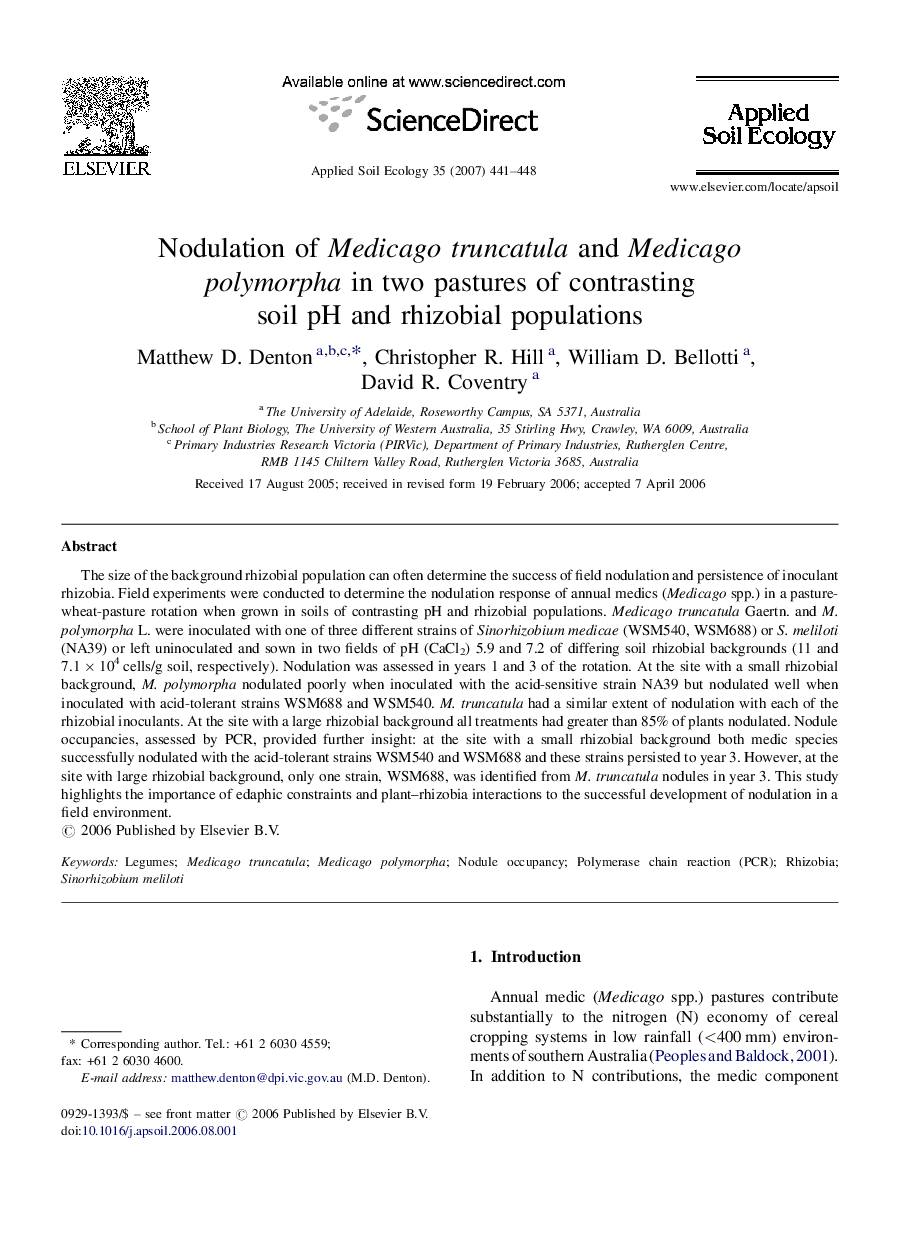| Article ID | Journal | Published Year | Pages | File Type |
|---|---|---|---|---|
| 4383373 | Applied Soil Ecology | 2007 | 8 Pages |
The size of the background rhizobial population can often determine the success of field nodulation and persistence of inoculant rhizobia. Field experiments were conducted to determine the nodulation response of annual medics (Medicago spp.) in a pasture-wheat-pasture rotation when grown in soils of contrasting pH and rhizobial populations. Medicago truncatula Gaertn. and M. polymorpha L. were inoculated with one of three different strains of Sinorhizobium medicae (WSM540, WSM688) or S. meliloti (NA39) or left uninoculated and sown in two fields of pH (CaCl2) 5.9 and 7.2 of differing soil rhizobial backgrounds (11 and 7.1 × 104 cells/g soil, respectively). Nodulation was assessed in years 1 and 3 of the rotation. At the site with a small rhizobial background, M. polymorpha nodulated poorly when inoculated with the acid-sensitive strain NA39 but nodulated well when inoculated with acid-tolerant strains WSM688 and WSM540. M. truncatula had a similar extent of nodulation with each of the rhizobial inoculants. At the site with a large rhizobial background all treatments had greater than 85% of plants nodulated. Nodule occupancies, assessed by PCR, provided further insight: at the site with a small rhizobial background both medic species successfully nodulated with the acid-tolerant strains WSM540 and WSM688 and these strains persisted to year 3. However, at the site with large rhizobial background, only one strain, WSM688, was identified from M. truncatula nodules in year 3. This study highlights the importance of edaphic constraints and plant–rhizobia interactions to the successful development of nodulation in a field environment.
